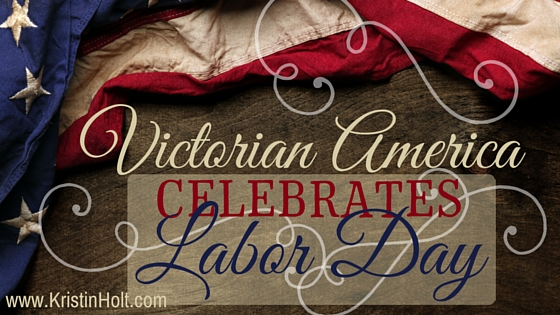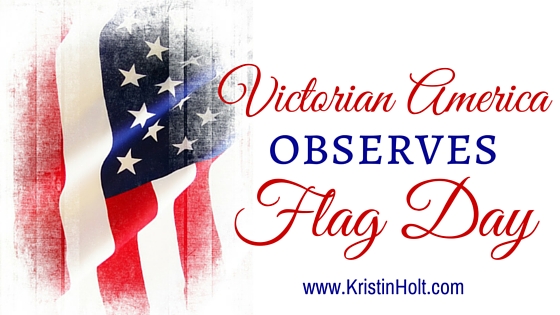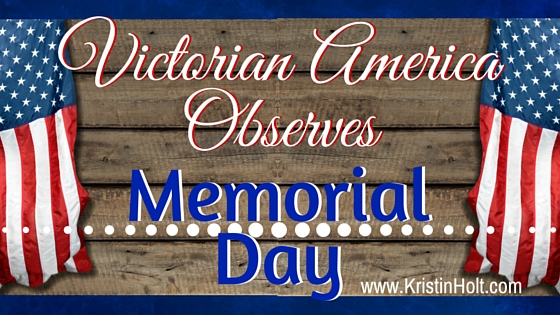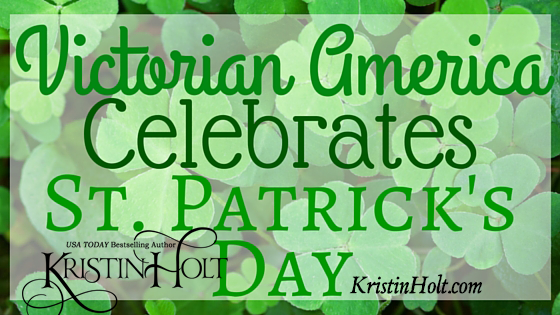
by Kristin Holt | Sep 5, 2016 | Articles
LABOR DAY was born of the circumstances within our Victorian-era United States Industrial Revolution. Unions wanted safer working conditions and 12- to 16-hour work days shortened to 8- or 9-hours. Strikes and protests lead to reform, and from the first Labor Day parade in 1882 peaceful Labor’s Holidays began to take root state by state until in 1894, Labor Day was declared by the President of the United States as a Federal Holiday. This article contains newspaper accounts from era papers, vintage photographs, and a dash of American history surrounding summer’s last hurrah.

by Kristin Holt | Jun 14, 2016 | Articles
Victorian Americans not only observed Flag Day on June 14th–they created it. Flag poles on government property sported the star spangled banner. Private citizens raised the flag, draped patriotic bunting over porch rails and fences, and attended military parades. Most of all, they recalled what the American flag stands for, its symbolism, and the meaning of patriotism. The practice of observing Flag Day on June 14th, annually, had been in practice since the 1870s and become widespread, but it took well into the 20th century for a President of the United States to make the day a federal holiday.

by Kristin Holt | May 30, 2016 | Articles
The history of America’s Memorial Day, sometimes called Decoration Day, is rooted in the American Civil War.

by Kristin Holt | Mar 17, 2016 | Articles
Our 19th Century (Victorian) American ancestors celebrated St. Patrick’s Day in many ways that mirror current / modern observations. The ‘holiday’ has morphed a bit, too, as is to be expected over a 150 to 100 year time span. Many of the 19th century modes of celebration have disappeared and are no longer in vogue.












